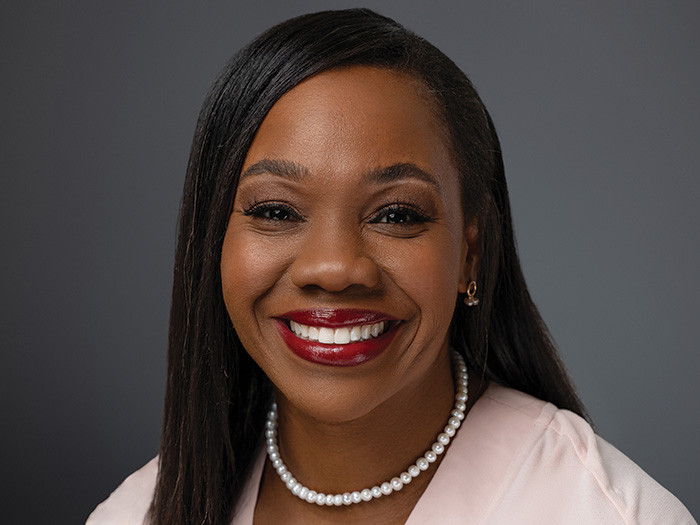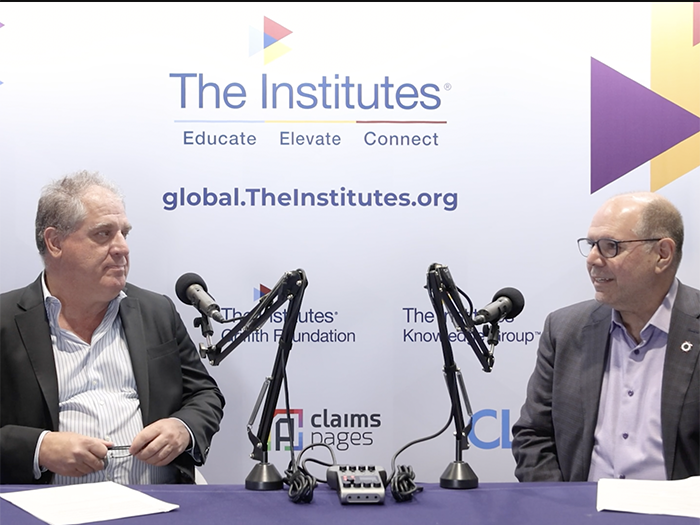Sponsored Content by Engle Martin
Expertise Overcomes Complexities in Construction Defects

A recovering economy is spurring developers to break ground on big projects at a faster pace.
But as more buildings materialize, so inevitably do claims for construction defects. These are typically lengthy and expensive claims that involve multiple parties — claimants, contractors, subcontractors, designers, experts, and often several insurance companies — and their reputation for complexity precedes them.
“The courts consider construction defect cases as complex litigation due to the involvement of multiple plaintiffs and defendants, multiple contracts, varying state laws, and policies from several insurance companies. They take an average of two to three years to resolve,” said Michael Chorak, Director of West Region Casualty Operations and General Adjuster for Engle Martin & Associates, a national independent loss adjusting and claims management firm.
Tackling the complexities of construction defect claims requires technical expertise in the construction sector, in the local legal environment, in managing experts, and in the art of mediation and communication. Bringing the right adjuster onto the case to work through these five challenging areas helps insurers get the fairest and fastest claim resolution.
1. Document Dive
Building a document trail presents one of the biggest challenges in a construction defect investigation. Understanding the context of a claim requires going back to the beginning of a project for a full scope of what work was done, when, and by whom. Most of that information can be found in job file documents, such as agreements with subcontractors, job site logs, invoices, and insurance history. Unfortunately, these records may not be easy to come by.
“After the recession hit, some contractors went out of business. If a claim is filed against them now, we can’t find them to track down their documents,” Chorak said. “Other times, we find the contractor threw out their records once they believed they were no longer needed, or they were lost or destroyed.”
Then there are cases where documentation was not done properly in the first place, which makes it nearly impossible to determine what company performed the work accused of being defective.
“Thankfully, technology has simplified the process today. It’s much easier to retrieve digital files from the cloud than to track down paper documents,” Chorak said.
2. Site Inspections

Michael Chorak, Director of West Region Casualty Operations and General Adjuster
Site inspections provide detail around the type and scope of damage done, and even a small oversight could lead to a very different claim outcome.
“In one case, our insured was the roofer for a condominium complex. The claim was that the roof was improperly installed, which led to leaking that was damaging the interior walls and fireplaces. Some adjusters might not go up on every single roof to verify the alleged defects and damages,” Chorak said.
“We like to look at every one. In addition to the roof and the wall, we’ll look at surrounding components like windows and stucco work. By doing a thorough inspection, we have a chance to fight back and answer some of the allegations from the plaintiff’s side. In that particular case, several of the roofs had no issues related to the alleged defects, but rather had storm damage.”
If only a portion of the properties are damaged, the claim diminishes in size and could also help to narrow down which subcontractors were responsible for the defects. It’s also possible that some damage claimed was caused by some factor other than the defect in question.
3. Parsing through Policies
Seeing the damages firsthand also helps to determine whether it triggers any insurance policies carried by the general contractor. Again, the involvement of multiple insureds and insurers over the course of a large-scale project makes the task daunting.
“The general contractor may have been working with four different insurance companies, and the subcontractors may have their own policies. All of these insurers will be sharing a piece of the pie,” Chorak said.
Separating these coverages also calls for a review of insurance history and contractual transfer of liability. If the faulty work was performed by a subcontractor, was that general contractor listed as an additional insured on the subcontractor’s commercial general liability policy? Were they all covered under an owner controlled insurance program (OCIP) or another wrap policy?
After all that, the policy language is scrutinized. The actual workmanship itself, for example, may not be covered, while subsequent damages created by the defect may be. In some cases, depending on the jurisdiction, construction defects do not qualify as an “occurrence” at all.
“We need to know if the alleged defect is an occurrence. Did the property damage directly result from the defect, and how is property damage interpreted in the insurance policy?” Chorak said. “Every policy will be different in the coverage it provides.”
4. Legal and Litigation Landscape
Arriving at the fairest and most appropriate claim value also requires awareness of local laws and litigation trends. Statutes of repose in construction defect claims, for example, vary from state to state.
A statute of repose may impose a much stricter deadline than a statute of limitation, shortening the window in which a claim can be filed. That constraint may push some people to file claims as a reflex when issues arise, not wanting to let the time period expire.
Nevada, for example, shortened the window from 10 years to six. Other states have made similar changes. Regions with shorter statutes of repose typically see more claims. Court precedents also differ across these areas.
“In Las Vegas, Clark County, for example, many of the judges are ex-plaintiff’s attorneys, so they tend to favor the plaintiff in most cases. It can be difficult at times for insurance companies on the defense side to get a ruling in their favor. In other parts of the country, such as Maricopa County in Phoenix, it is a little more level playing field for litigants,” Chorak said.
Knowing the litigation landscape helps to lay out a course for the claim. Is it worth it to fight, or to stay out of the courtroom? In this situation, strong mediation and communication skills are invaluable.
Keeping contractors and their insurers on the same page is critical. Often, Chorak said, contractors want to fight a claim tooth and nail in defense of their work, while insurers are inclined to avoid litigation. Striking the right balance — and relaying each party’s desires effectively — takes consistent and thorough communication.
“If we arrive at a point where we accept liability, it takes a delicate game of tug of war to get every insurer involved to agree on an acceptable payment amount. It’s our job to get to that number without sacrificing fairness in the resolution,” Chorak said.
5. Adjuster Expertise
For complex construction defect claims, insurers reach the fairest and fastest claim resolution by partnering with an adjuster that knows the ins and outs of both the insurance business and the construction industry.
“There are people on my team who have been in the business 30 years,” said Chorak, who oversees 16 offices in Engle Martin’s Western territory. As trends evolve, adjusters stay up to date through continued training focused on both the local legal and regulatory changes as well as construction-specific updates.
“We send our people to construction defect conferences all over the country. In fact, our team members are occasionally featured speakers at these conferences,” Chorak said. “That demonstrates the level of expertise we’ve built in this sector.”
As important as that experience is, it means little over the long-term without investment in the next generation. A mentor program ensures that seasoned adjusters pass on their knowledge to entry-level adjusters just learning the ropes.
“If we have a larger loss, we’ll team up a seasoned adjuster with a more junior adjuster so they can learn how to navigate through it,” Chorak said. “We can reassure our clients that we will be strong in this sector going forward, and that every case receives the same level of expertise.”
To learn more about Engle Martin & Associates, visit http://www.englemartin.com/services/loss-adjusting/casualty/.
This article was produced by the R&I Brand Studio, a unit of the advertising department of Risk & Insurance, in collaboration with Engle Martin & Associates. The editorial staff of Risk & Insurance had no role in its preparation.










